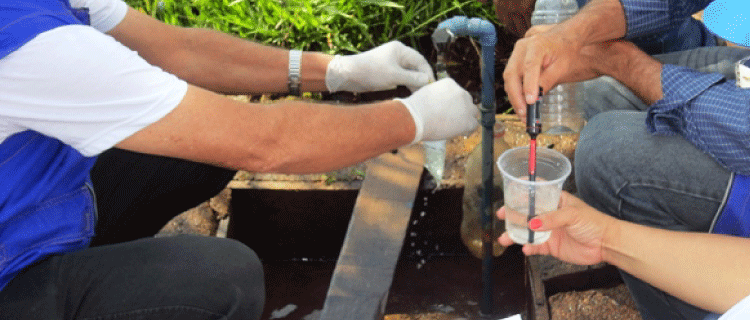Understand water quality monitoring and what it can indicate about your region
Published 10/29/2020
Brazil is the country that has the largest amount of fresh water in the world, concentrating, in its territory, about 12% of the existing total. This water, which is surface or underground, is distributed among rivers, aquifers and dams and is used, above all, to supply the population, irrigate crops and for the industrial sector. For this distribution to occur, however, there must be certain levels of water quality.
The CONAMA resolution No. 357, of March 2005, instituted the monitoring of waterways and defined it as "measurement or verification of water quality and quantity parameters, which may be continuous or periodic, used for monitoring the condition and control of the quality of the body of water." From then on, the National Water Agency (ANA), in partnership with state agencies, started monitoring the quality of surface and groundwater to determine whether this natural resource is suitable for its various uses. But how is this monitoring done?

Photo: archive National Water Agency (ANA)
The main practices involving this quality control are based on the collection of data and samples at specific (georeferenced) locations, done seasonally, to analyze the concentrations of physical, chemical and biological elements in the water. The Water Quality Index (IQA) is the main qualitative indicator in the country and has as its analysis parameters water temperature, pH, dissolved oxygen, total residue, biochemical oxygen demand, thermotolerant coliforms, total nitrogen, total phosphorus, and turbidity.
Monitoring, therefore, aims to assess, track, and interpret water quality levels in various regions of the country. There are also monitoring modalities that differ based on the purpose of a given analysis:
- Baseline monitoring: is performed at strategic points to monitor the evolution of water quality, identify trends, and support the development of diagnostics. It usually varies according to hydrological cycles and extends over an indeterminate period.
- Inventories: the analysis is made in a more intense way of one or more quality parameters, with the objective of establishing a diagnosis of a specific stretch of watercourse. This modality is related to the monitoring of anthropic actions in the region and, therefore, has a determined time.
- Vigilance: the control done in this modality is carried out in places where water quality is fundamental for a certain use (especially for human consumption) or in critical places associated with water use. Here, the analyses are made practically in real time and allow specific changes to be identified, requiring action to be taken or not.
- De Conformity: monitoring and analyses are done by users of a particular watercourse (self-monitoring) from legal demands established by public agencies.
From the monitoring, the responsible bodies issue an opinion that determines the quality of the water analyzed. According to the framing classes of the ANA, water bodies are classified by Special Class, Class 1, Class 2, Class 3 and Class 4, the first being of the highest quality and the last of the worst quality.